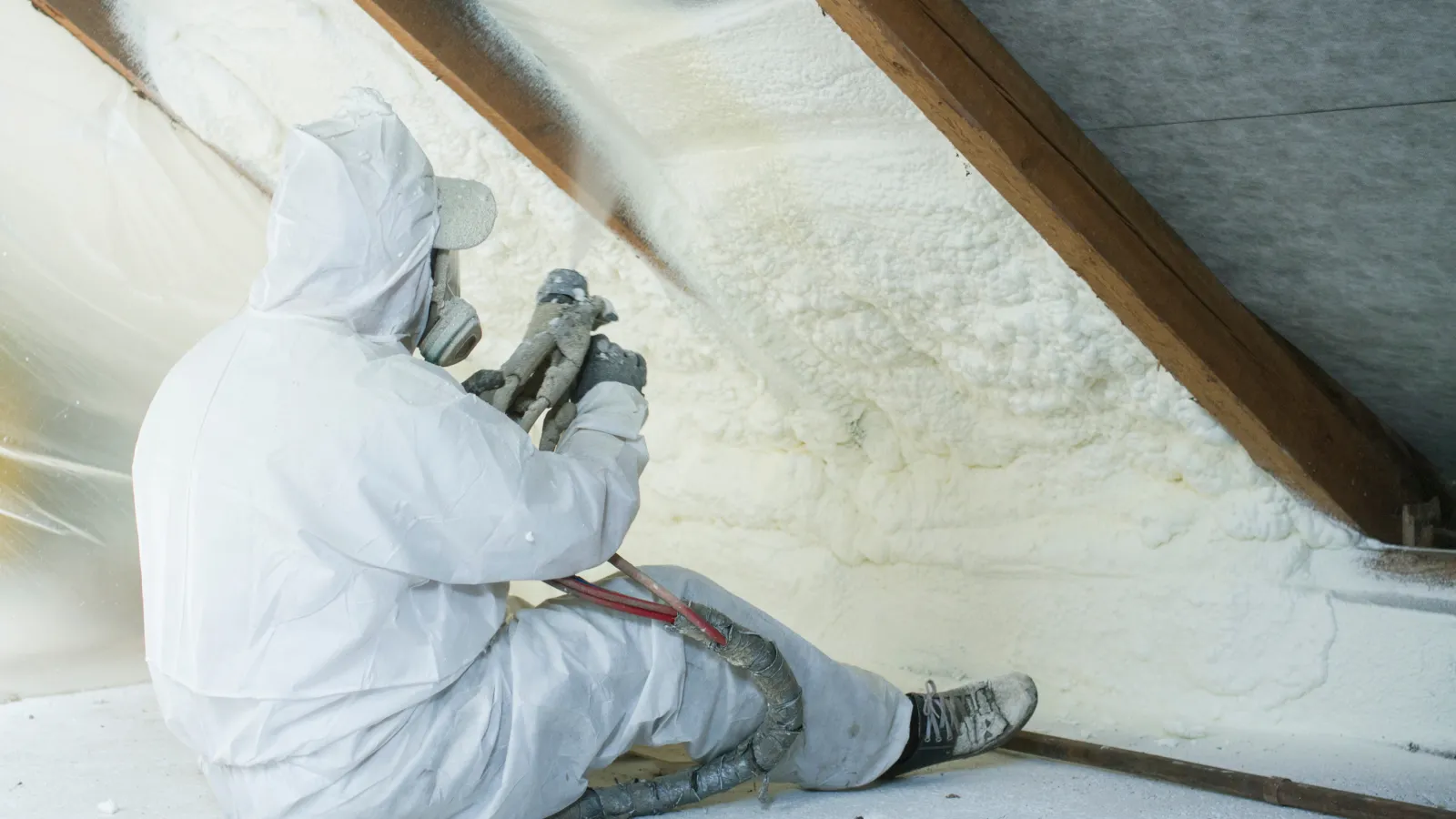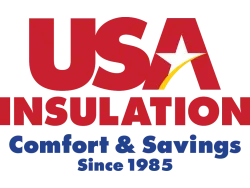Scrolling through YouTube, you've probably seen the videos. A confident homeowner with a spray foam kit, transforming their attic in a weekend. It looks easy. It looks affordable. And the comment section is full of people saying "just saved $3,000!"
Here's what those videos don't show: the projects that went horribly wrong.
The truth about DIY spray foam insulation? It's one of those rare home improvement projects where doing it yourself can actually cost you more in the long run. Between health risks, application mistakes, building code violations, and potential home damage, the "savings" quickly disappear.
Let's break down exactly why DIY spray foam insulation isn't worth it and why hiring professionals like USA Insulation is the smarter investment.
The Hidden Costs Nobody Talks About
DIY spray foam kits aren't as cheap as they seem. Sure, you can buy a basic kit for $400 to $600. But here's what that actually gets you:
A single DIY spray foam kit typically covers only 200 to 600 square feet (depending on thickness). The average attic? About 1,200 to 1,500 square feet. You'll need multiple kits, which will quickly push your material cost to $1,500 to $3,000 or more. Add in protective equipment (we'll get to that), disposal fees, and application tools, and you're looking at professional pricing without professional results.
Professional installation costs $1.50 to $4.50 per square foot depending on whether you choose open-cell or closed-cell foam. For a 1,500-square-foot attic, that's $2,250 to $6,750. Not cheap, but not dramatically more than DIY once you factor in reality.
Health Risks You Can't Afford to Ignore
This is where DIY spray foam gets genuinely dangerous.
Spray foam chemicals (isocyanates) are toxic during application. Before the foam cures, it releases fumes that can cause:
- Respiratory problems and asthma attacks
- Skin and eye irritation
- Chemical sensitization (permanent allergic reactions)
- Headaches, dizziness, and nausea
Professional installers wear full respirators with supplied air, not just dust masks. They wear protective suits, gloves, and eye protection. Most DIYers? A hardware store respirator at best. That's not adequate protection.
Even after application, poorly mixed or applied foam can continue off-gassing for months. If your ratios are wrong (incredibly common with DIY kits), you could make your home unsafe to live in. Professional removal and remediation can cost $5,000 to $15,000.
The health risks alone should end the DIY debate, but there's more.
Application Mistakes Are Extremely Common
Spray foam seems simple. Point, spray, watch it expand. However, getting it right requires training and experience that most homeowners lack.
Common DIY disasters include:
Over-application: Spray foam expands 30 to 100 times its liquid volume. Apply too much and it can:
- Bow walls inward or outward
- Crack drywall
- Warp roof decking
- Push structural framing out of alignment
We've seen DIY jobs where homeowners had to tear out walls because the foam pressure damaged the structure. Repair costs? Often $10,000 or more.
Under-application: Gaps and voids defeat the entire purpose of spray foam. Without thermal imaging cameras (which professionals use), you won't see where you missed spots until your energy bills stay high.
Wrong foam type: Open-cell vs. closed-cell matters enormously. Use open-cell where you need a vapor barrier? Hello, moisture problems and mold. Use closed-cell in the wrong application? You've just wasted money on overkill.
Improper mixing ratios: DIY kits require precise temperature control and mixing. Get the ratio wrong and the foam won't cure properly, creating a toxic, sticky mess that never fully hardens.
Building Code and Insurance Nightmares
Most municipalities require permits for spray foam insulation. And permits mean inspections. DIY spray foam installations frequently fail inspection because:
- Incorrect fire rating for the application
- Missing thermal barrier (required in living spaces)
- Improper ventilation blocking
- Building code violations regarding foam thickness and placement
Failed inspections mean removal and reinstallation. That's double the cost.
Worse, some insurance companies won't cover homes with DIY spray foam or they'll drop your coverage. Why? Improperly installed foam creates fire risks, moisture problems, and structural issues. Professional installation comes with certifications that satisfy insurers. DIY doesn't.
Some homeowners discover this when trying to sell. Buyers' inspectors flag unpermitted spray foam, killing deals or requiring expensive remediation.
You Can't Fix Spray Foam Mistakes Easily
Here's the thing about spray foam: it's permanent.
Made a mistake with fiberglass batts? Pull them out, try again. Made a mistake with spray foam? You're looking at professional removal that costs $1 to $2 per square foot, plus disposal fees. The foam bonds to wood, metal, and concrete. Removing it often means removing building materials too.
DIYers often discover their mistakes months or years later when:
- Moisture problems emerge
- Energy bills stay high despite "new insulation"
- Structural issues develop
- Ventilation is blocked causing roof rot
At that point, fixing the problem costs more than hiring professionals in the first place.
The Professional Advantage: What You're Actually Paying For
When you hire professional spray foam installers like USA Insulation, you're not just paying for labor. You're paying for:
Expertise and Training
Professional installers complete certification programs and have years of experience. They know:
- Exactly how much foam to apply for each cavity depth
- How to account for temperature and humidity during application
- Which foam type suits your climate and application
- How to avoid common mistakes that plague DIY projects
Professional Equipment
Commercial spray foam equipment provides:
- Consistent mixing ratios (critical for proper curing)
- Even application with no gaps
- Temperature controls for optimal results
- Higher efficiency (less waste, better coverage)
DIY kits can't match this precision.
Safety Protocols
Professional crews bring:
- Industrial respirators with supplied air
- Full protective gear
- Proper ventilation equipment
- Training in chemical handling
Your safety isn't compromised.
Quality Guarantees and Warranties
Professional installation includes:
- Workmanship warranties (typically 5 to 10 years)
- Insurance coverage for any issues
- Code compliance guarantees
- Thermal imaging verification
- Moisture barrier installation when needed
DIY offers none of these protections.
Code Compliance and Permits
Professionals handle:
- All necessary permits
- Required inspections
- Proper fire ratings and thermal barriers
- Documentation for resale
You're protected legally and financially.
When DIY Spray Foam Makes Sense (Spoiler: Almost Never)
To be fair, there are extremely limited situations where DIY spray foam might be appropriate:
- Small gaps and cracks: Canned spray foam for weatherization (not whole-room insulation)
- Non-living spaces: Maybe a detached shed or workshop (though even then, professionals are safer)
For your home, garage, attic, crawl space, or any living area? Professional installation isn't optional. It's essential.
The DIY "savings"? Often zero. And if you make mistakes (which most DIYers do), you'll spend thousands more fixing them.
The Bottom Line: Spray Foam Isn't a DIY Project
Some home improvement projects are perfect for DIY. Spray foam insulation isn't one of them.
The chemical dangers, application complexity, code requirements, and permanent nature of spray foam make it one of the riskiest DIY projects you could attempt. The potential for expensive mistakes far outweighs any possible savings.
Professional installers have the training, equipment, and experience to do the job right the first time. You get proper insulation that actually saves energy, meets building codes, satisfies insurance requirements, and doesn't create health hazards.
Ready to Insulate the Right Way?
Don't gamble with your home and health. Contact USA Insulation for a free, no-obligation consultation. Our certified installers will assess your property, explain your options, provide transparent pricing, and deliver professional results backed by industry-leading warranties.
Get the energy savings you want without the DIY disasters you don't need. Because when it comes to spray foam insulation, professional installation isn't just better—it's the only safe choice.



